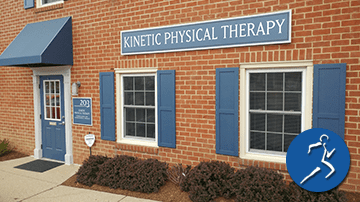
Muscle knots, also known as trigger points, are localized areas of sustained muscle tension. Moreover, these knots cause pain, stiffness, and a reduced range of motion. In particular, the back and neck are most affected due to high postural demands. Furthermore, muscle knots can negatively impact daily activities and overall quality of life. Consequently, this article provides an evidence-based review of the causes and prevention strategies for muscle knots. In addition, it offers clear, systematic guidance for medical professionals and patients.
Understanding Muscle Knots
Muscle knots are small, hyperirritable spots within muscle tissue. They develop when muscle fibers contract and do not relax. Therefore, blood flow becomes restricted, and metabolic waste accumulates. As a result, pain and stiffness ensue. Additionally, trigger points tend to form in muscles that are under constant stress. For instance, the muscles of the back and neck are highly vulnerable due to repetitive strain and prolonged static postures. Hence, understanding these mechanisms is essential for effective prevention and treatment.
Detailed Causes of Muscle Knots
Muscle knots arise from a combination of physical, environmental, and emotional factors. Firstly, overuse is a primary contributor. Repetitive motions and heavy physical tasks overload muscle fibers. Consequently, micro-tears occur, and inflammation develops. Moreover, sustained muscle contraction prevents adequate relaxation, which further promotes knot formation.
Secondly, poor posture is another significant factor. Improper alignment forces muscles to work inefficiently. For example, slouching at a desk or leaning forward while driving increases the load on neck and back muscles. Thus, the likelihood of developing trigger points rises.
Furthermore, emotional stress contributes considerably to muscle tension. When stress levels are high, the body releases hormones that induce involuntary muscle contractions. As a result, tension accumulates, particularly in the shoulder, neck, and back regions.
Additionally, dehydration plays a critical role. Insufficient hydration reduces muscle elasticity and impairs nutrient delivery. Therefore, muscles become more susceptible to strain and injury.
Moreover, inadequate warm-up and stretching routines further exacerbate the problem. Without proper preparation, muscles remain stiff and vulnerable during physical activity. Thus, multiple factors interact to cause muscle knots.
In-Depth Look at the Causes
Muscle overuse stands out as a central cause of trigger points. Repetitive strain from daily activities creates micro-traumas in muscle fibers. Subsequently, inflammatory mediators are released, which intensify local pain. Moreover, prolonged static postures limit blood circulation and nutrient exchange. Hence, the continuous cycle of stress and inadequate recovery leads to chronic muscle tension.
In addition, sustained muscle contraction without adequate rest contributes to knot formation. Static loading of muscles forces them to remain in a contracted state. Consequently, oxygen delivery is compromised, and waste products build up. Furthermore, insufficient sleep prevents complete muscle repair and recovery. Thus, a lack of proper rest compounds the issue.
Lifestyle and Environmental Contributors
Lifestyle choices significantly influence muscle health. Sedentary behavior reduces blood flow to muscle tissues. In contrast, regular physical activity promotes circulation and tissue repair. Furthermore, a balanced diet that includes essential vitamins and minerals supports muscle function.
Environmental conditions also affect muscle tension. For example, cold weather can induce muscle contraction. Accordingly, exposure to low temperatures increases the risk of developing trigger points. Moreover, ergonomically poor work environments exacerbate muscle strain. Therefore, optimizing workstation setups and using supportive seating are crucial preventive measures.
Prevention Strategies for Muscle Knots
Preventing muscle knots requires a multifaceted approach. The following strategies are recommended:
Maintain Proper Posture:
• Sit with a straight back and relaxed shoulders.
• Adjust workstations to support ergonomic alignment.
• Ensure that chairs provide adequate lumbar support.
Incorporate Regular Stretching:
• Perform gentle stretches at regular intervals throughout the day.
• Focus on the neck, shoulders, and back muscles.
• Use dynamic stretching before exercise and static stretching afterward.
Schedule Frequent Movement Breaks:
• Stand and move every 30 minutes to relieve muscle tension.
• Use timers or alarms to remind you to change positions.
• Engage in brief walks or light exercises during breaks.
Ensure Adequate Hydration:
• Drink sufficient water throughout the day to maintain muscle elasticity.
• Keep a water bottle accessible at work and home.
• Consume hydrating foods such as fruits and vegetables.
Adopt a Balanced Exercise Routine:
• Include both aerobic activities and strength training in your regimen.
• Aim for moderate-intensity workouts that do not overly strain muscles.
• Allow for adequate rest and recovery between exercise sessions.
Manage Stress Effectively:
• Practice relaxation techniques such as deep breathing and meditation.
• Incorporate mindfulness practices into your daily routine.
• Consider activities such as yoga or tai chi to reduce overall muscle tension.
These measures are designed to promote optimal muscle function. Furthermore, they enhance blood flow and facilitate the removal of metabolic waste, thereby reducing the risk of trigger point formation.
Additional Self-Care and Lifestyle Adjustments
Beyond the primary prevention strategies, several self-care measures can further support muscle health:
Improve Sleep Quality:
• Aim for seven to nine hours of sleep each night to facilitate muscle recovery.
• Maintain a consistent sleep schedule by going to bed and waking up at the same time daily.
• Create a restful sleep environment free from distractions.
Optimize the Work Environment:
• Ensure that computer screens are positioned at eye level to reduce neck strain.
• Use adjustable chairs and desks that promote a neutral spine position.
• Arrange the workspace to allow frequent movement and minimize static postures.
Balance Activity and Rest:
• Alternate active days with rest days to allow muscles to recover fully.
• Avoid overloading specific muscle groups during workouts.
• Incorporate low-impact exercises to maintain overall fitness without excessive strain.
Incorporate Self-Massage Techniques:
• Utilize foam rollers or massage balls on areas of muscle tension.
• Engage in professional massage therapy as needed for deeper tissue relief.
• Perform gentle self-massage to alleviate localized discomfort.
Each of these adjustments contributes to long-term muscle health. In addition, they support the maintenance of muscle flexibility and reduce chronic strain over time.
When to See a Physical Therapist
Medical evaluation is warranted when muscle knots persist despite diligent self-care. A physical therapist can provide a comprehensive assessment of muscle function. Specifically, the therapist examines posture, movement patterns, and flexibility. Subsequently, targeted treatments are implemented to relieve trigger points. These interventions may include manual therapy, specific stretching exercises, and strength training.
Furthermore, early intervention is essential to prevent further injury. If pain intensifies or interferes with daily activities, a referral to a physical therapist is recommended. The therapist will develop an individualized treatment plan based on a thorough evaluation. In addition, professional guidance ensures that therapeutic exercises are performed safely and effectively. Consequently, patients benefit from a structured approach that accelerates recovery and minimizes recurrence.
Consistency and Long-Term Care
Long-term muscle health requires regular, consistent care. It is imperative to continue therapeutic exercises between clinical sessions. Moreover, daily stretching routines should be maintained even after formal treatment concludes. Regular physical activity builds strength and enhances flexibility. Consequently, consistent exercise prevents the recurrence of trigger points and reduces chronic pain.
Ready to get rid of your Muscle Knots?
Muscle knots develop from a complex interplay of overuse, poor posture, emotional stress, dehydration, and inadequate recovery. They frequently affect the back and neck, leading to pain and restricted movement. Therefore, prevention requires a multifaceted approach.
Maintaining proper posture, incorporating regular stretching, and ensuring adequate hydration are essential. Additionally, frequent movement breaks, balanced exercise routines, and effective stress management further reduce the risk.
We realize that there are many options when it comes to choosing physical therapy treatment. Patients may benefit from the consistent care provided at Kinetic Physical Therapy. Kinetic Physical Therapy values every patient’s well-being and offers a reliable, individualized approach to treatment.


